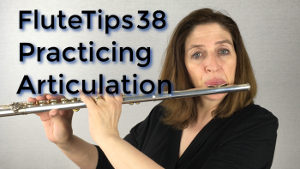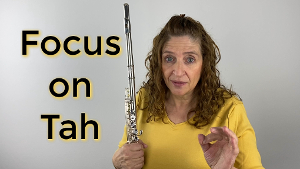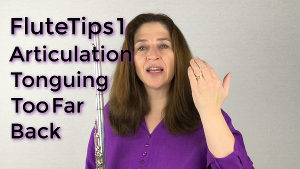Do you practice articulation? I mean all sorts of different kinds of articulation? If not you should. Articulation is done by using the tongue, which is a muscle that needs to be exercised in order to work properly when called upon. If you are needing a fast tongue no matter if you are double tonguing, single tonguing or just a mixture of tonguing and slurring, your tongue needs to practice. When you put articulation practice into your daily technique routine, when called upon to move fast and effortlessly your tongue will be there for you.
My go to articulation practice is T and G or for those that haven’t experienced the wonders of this book:
Taffanel and Gaubert 17 Grand Exercises for the Flute
This flute players bible is filled with the wonders of building flute technique. For most of the exercises there are a list of articulations to use when performing these exercises. I absolutely love using them and I require all my students to use them in the order in which they come.
The only reasoning for this is so that they don’t inadvertently skip any. There are some articulations that are slightly more difficult then others such as tongue 1 slur 2 tongue 1. That one is very easy to skip. But don’t skip any! You never know when you will run across that exact articulation in a solo or etude.
T and G #1,2,4,and 5 are all fabulous exercises to work on using the different articulations. For me and my students I alternate articulations in an orderly fashion. In #1, I switch articulations every 2 lines. In number 4, I change articulations at every key change. In number 5, I play every chromatic scale with all 10 articulations.
If you are practicing arpeggios, #10 and 11 are fantastic and have articulations to explore as well. Another key point is don’t begin every exercise with articulation #1. The next time you play that exercise begin with #2 and so on. This will insure that you won’t always be using the same articulation with the same lines every time.
There are other books out there with articulations exercises. When I need something really different, I use William Bennett’s book Sequences. His books uses all the major/minor scales in groups of 4,5,6,7 and 8. His articulations are slightly different but no less helpful.
The Bach Sonata in C major, 2nd movement is also a wonderful way to practice different articulations while practicing that solo as well. Any fast technical passage can be a workout in articulations if you make it so.
Remember, always use a metronome when practicing articulations. It’ll keep you honest!
Practice articulations, it does a body (or tongue) good!
DoctorFlute
Watch me demonstrate this: FluteTips 38 Practicing Articulation

Let’s Talk Articulation – Focus on Your Tah – FluteTips 179

FluteTips 1 Articulation Tonguing Too Far Back

Practice with Me Low Register Tonguing

FluteTips 47 Pizzicato Tonguing

